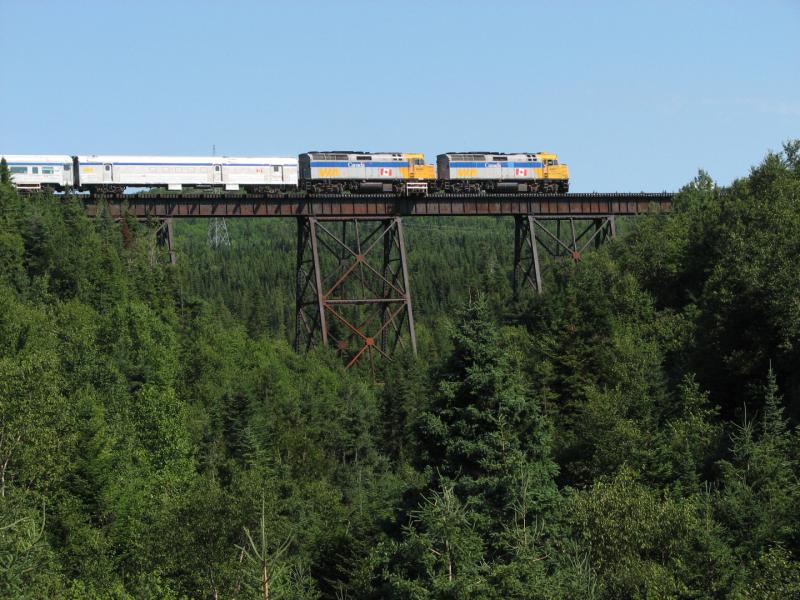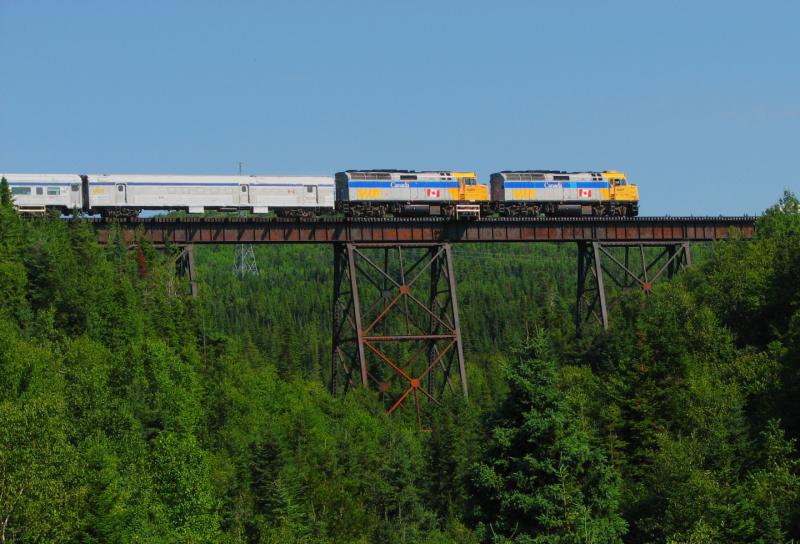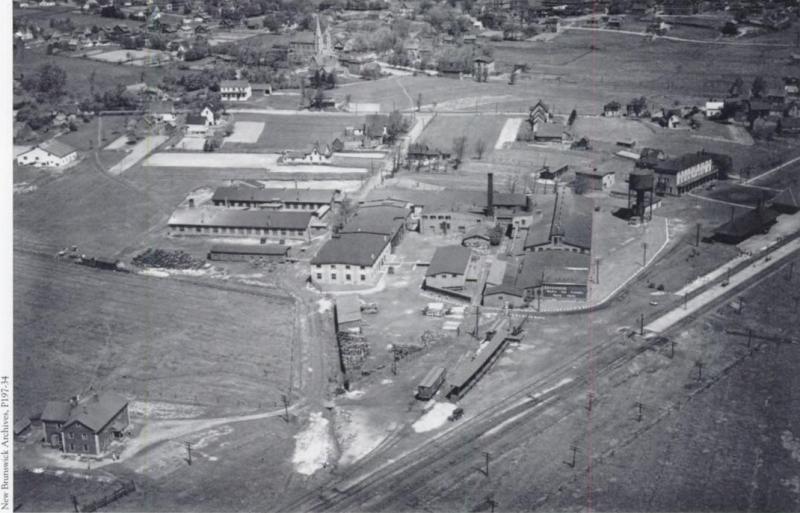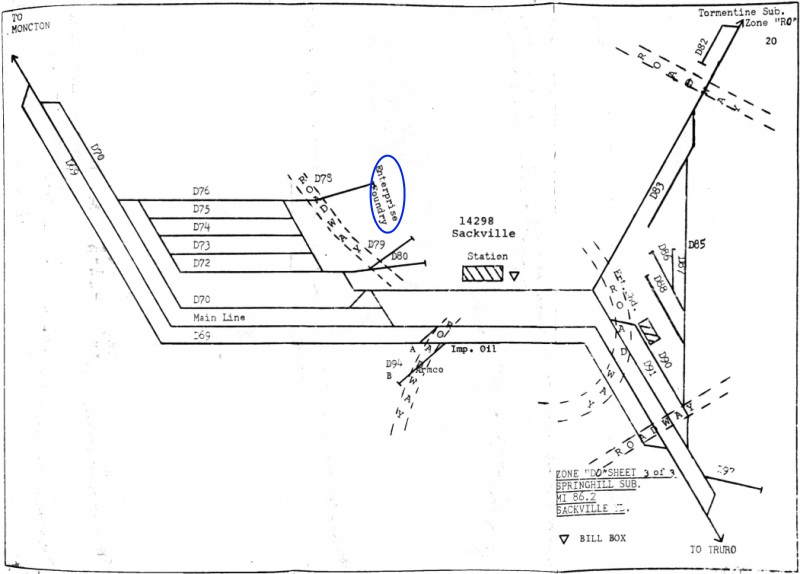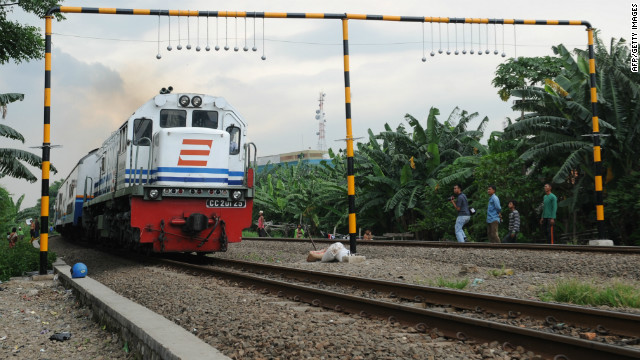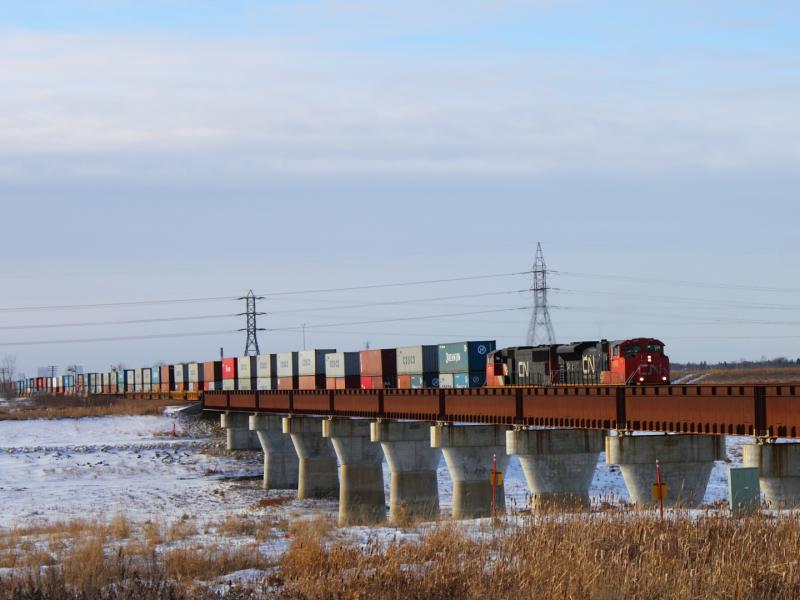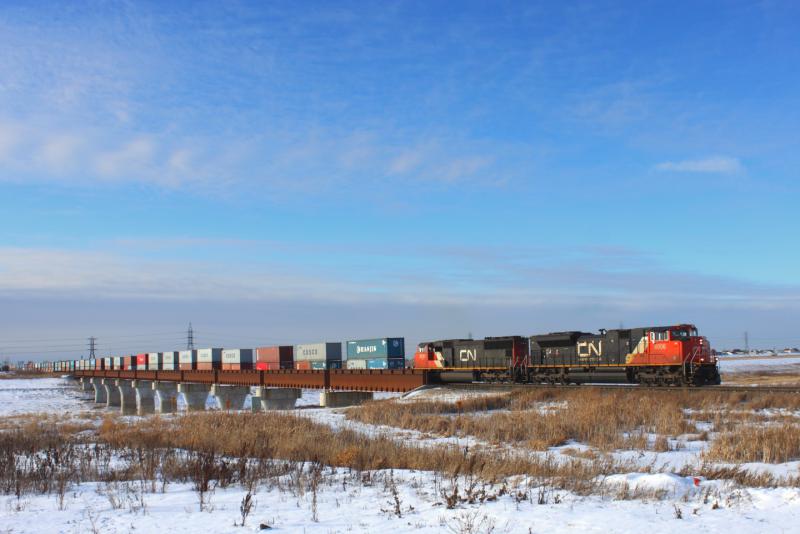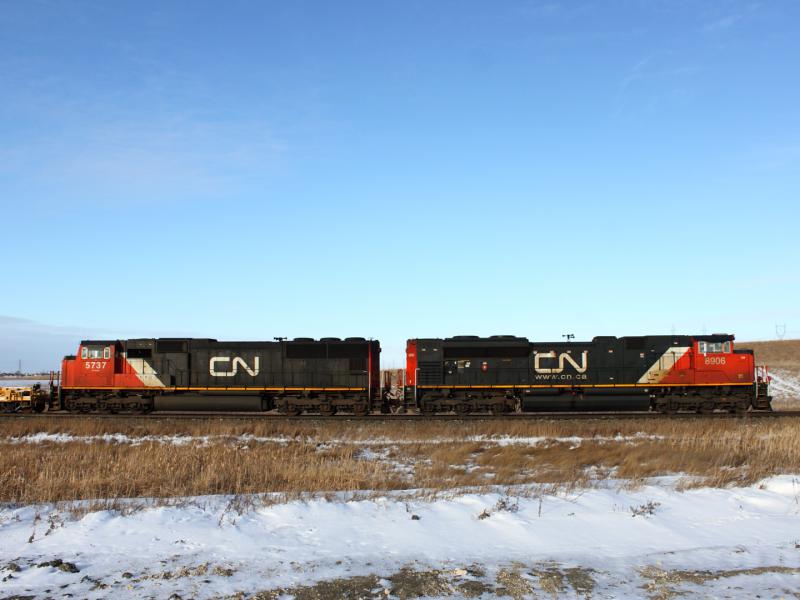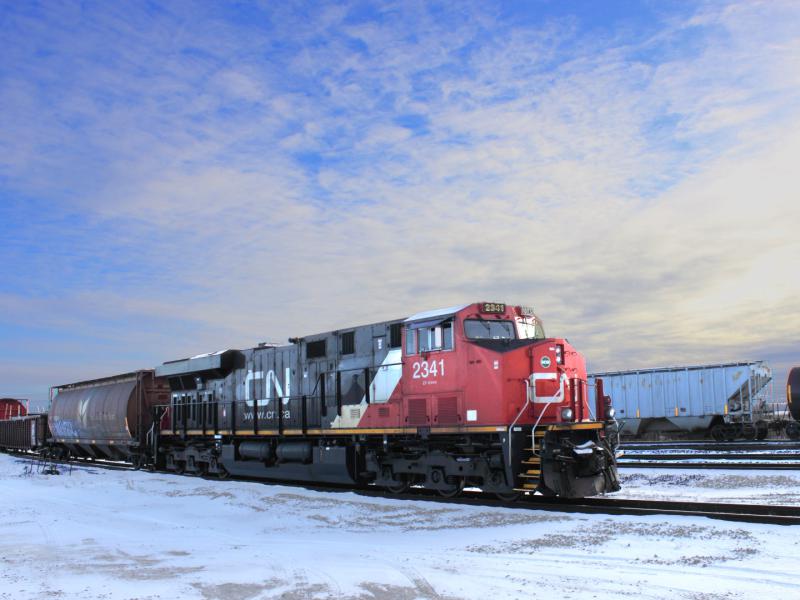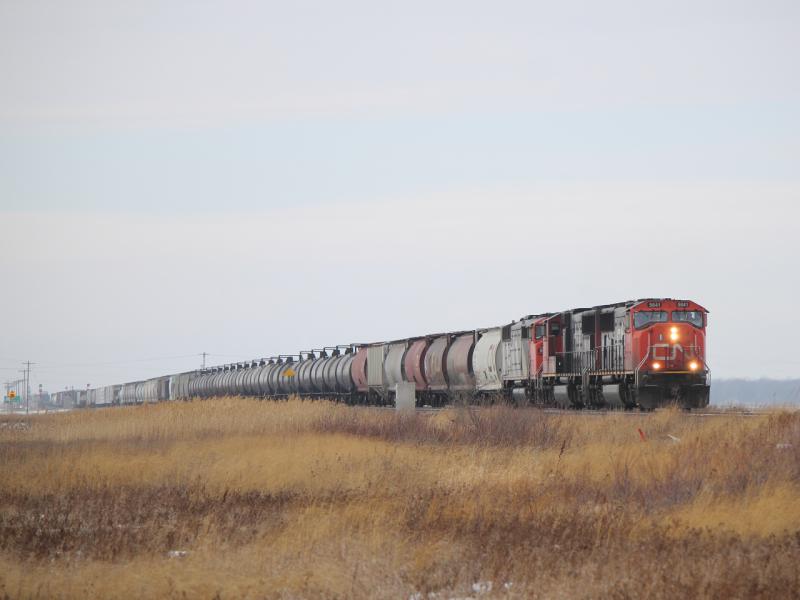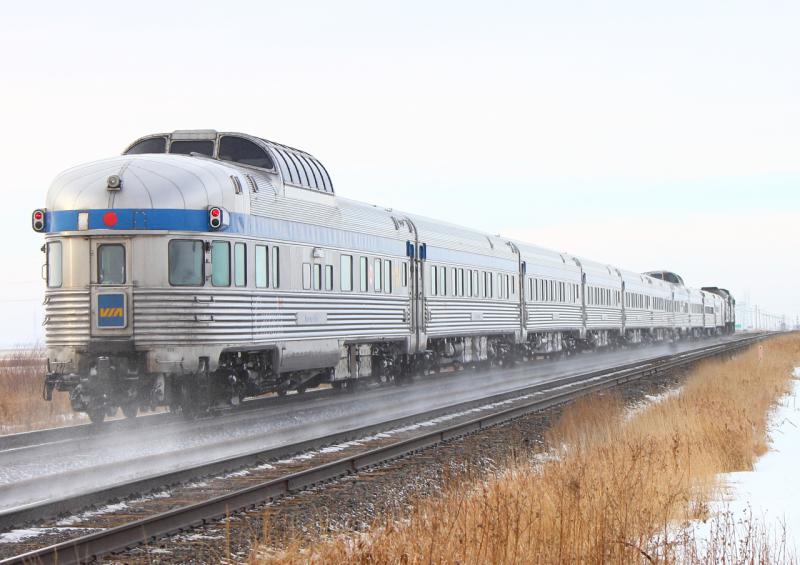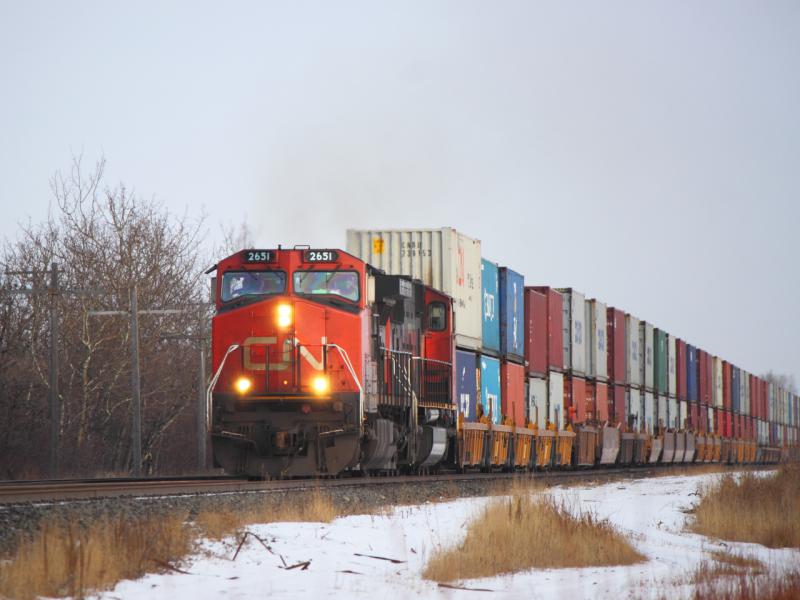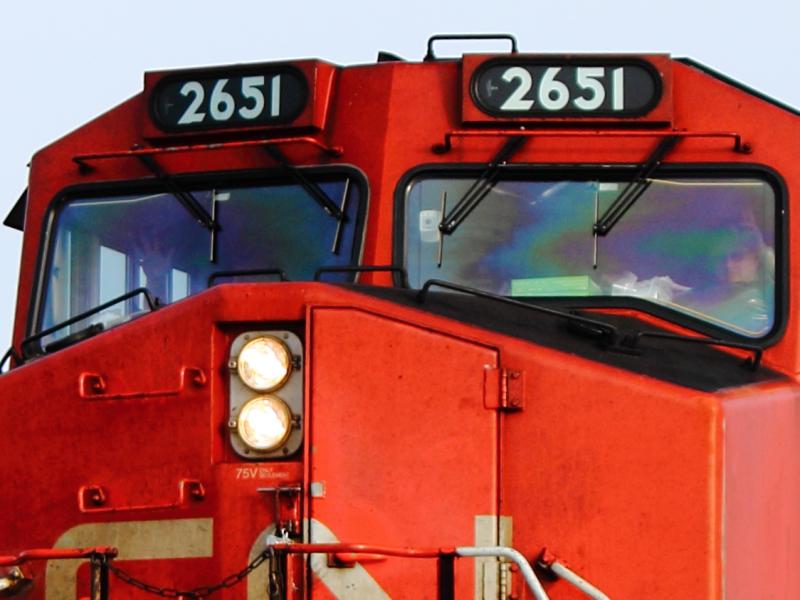On Saturday afternoon I went out with the kids to run a few errands and shoot a few trains. I headed toward my usual spot near Diamond to try to catch VIA 692 aka the Hudson Bay returning from its long journey from Churchill.
I had a little detour, though, because when I drove over Pembina Highway I saw the headlights of CN 532 to the north. I did a quick turnaround and went into St. Norbert to wait for 532 to roll by. I didn't want to go too far south so I set up at the crossing of Avenue Ducharme to get them. I did not have to wait long. In fact, I was still slapping the tripod up when CN 532 came around the bend. Faded SD75I CN 5628 and shiny ex-BNSF C40-8W CN 2199 were the power for the long train.
After they passed, I continued on my way up to Diamond. There were quite a few CN maintenance vehicles around and a foreman had a block from mile 10 (the hotbox detector) out to mile 17 or so. This meant that all trains had to call the foreman for permission to pass through his block, so I could get some advance warning.
I was not there long before I heard VIA 692 call through loud and clear to acknowledge that the foreman had given them permission to pass through on the north track at 30 MPH. I set up the tripod with the Canon S3 on it for video, and waited for the train.
I should mention that the outside temperature was -11C according to the hotbox, but the wind was howling. My hands were almost completely numb after VIA passed. I think I need to toss some light gloves into the camera bag!
Anyway, here's VIA 6455 leading the usual consist of two engines, baggage car, two coaches, diner and one Chateau sleeper car.
Here's my video. Note that my tripod is a little broken and the wind of the passing train twisted the head around a bit!
VanBilly1 shot the same train at St. James Junction a few miles east of me.
That was all well and good. I heard CN 117 calling for permission to go through the block, so I shot them coming the other way. I had already packed up my tripod, and I didn't feel like standing in the cold cold wind again anyway, so I just shot stills.
Dash-9 IC 2724 and ES44DC CN 2292 were the power for this intermodal train. You can see by the light that the sun was getting close to the horizon. This was at 5 minutes to 5 PM.
Yes, yes, Steve, all good, but where is this "shot" you are talking about?
I figured there were not going to be any more trains on CN for a while, and with darkness approaching I thought I'd try my luck on the CP mainline 10 minutes north. I drove up to the elevator at Makwa and saw that the west-facing lights had a green light on them.
In fact it was red over green over red by the elevator at Makwa, which is Canadian Rail Operating Rules rule 416, "Limited to Clear"... "Proceed, LIMITED speed passing signal and through turnouts." From Makwa (mile 11.1 of the CP Carberry subdivision) there are two main tracks east to the yard at mile 1.7, so the eastbound train would be switching to the other main track, hence the LIMITED speed.
This was good! It meant there was probably a train coming soon. I headed west toward Rosser village, straining to see a headlight in the falling dark. I passed through Rosser and continued west toward the grain elevator at Meadows, figuring if nothing else I might get a bit of sunset on the side of the elevator. As I was on the straightaway approaching the elevator, I saw headlights on the track on the other side of the elevator. I was hoping that I could get there in time to get the train passing the elevator.
Well, you might have guessed that I did get there in time. Here's the Shot.
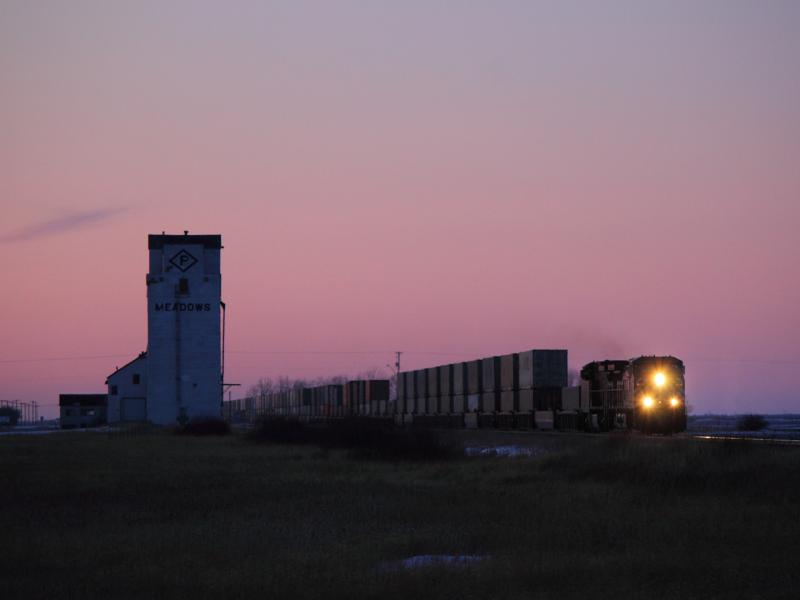
I mean, seriously, look at that sky! I could not have asked for a nicer colour.
The train rolled on by and I gave pursuit. It was going a good 55-60 MPH (speed limit 60) so I did not pass the head end until near Makwa where they had to slow to that LIMITED speed. By this time I had my "nifty fifty" 50mm prime lens on to try to grab what little light there was. I did this panning shot of CEFX 1050 as it rolled on by, and the engineer gave me a few toots.
I was super pleased with myself for getting that elevator shot, and I think I need to try some more sunset shots!
You can view the complete consists in my sightings database, as always.
